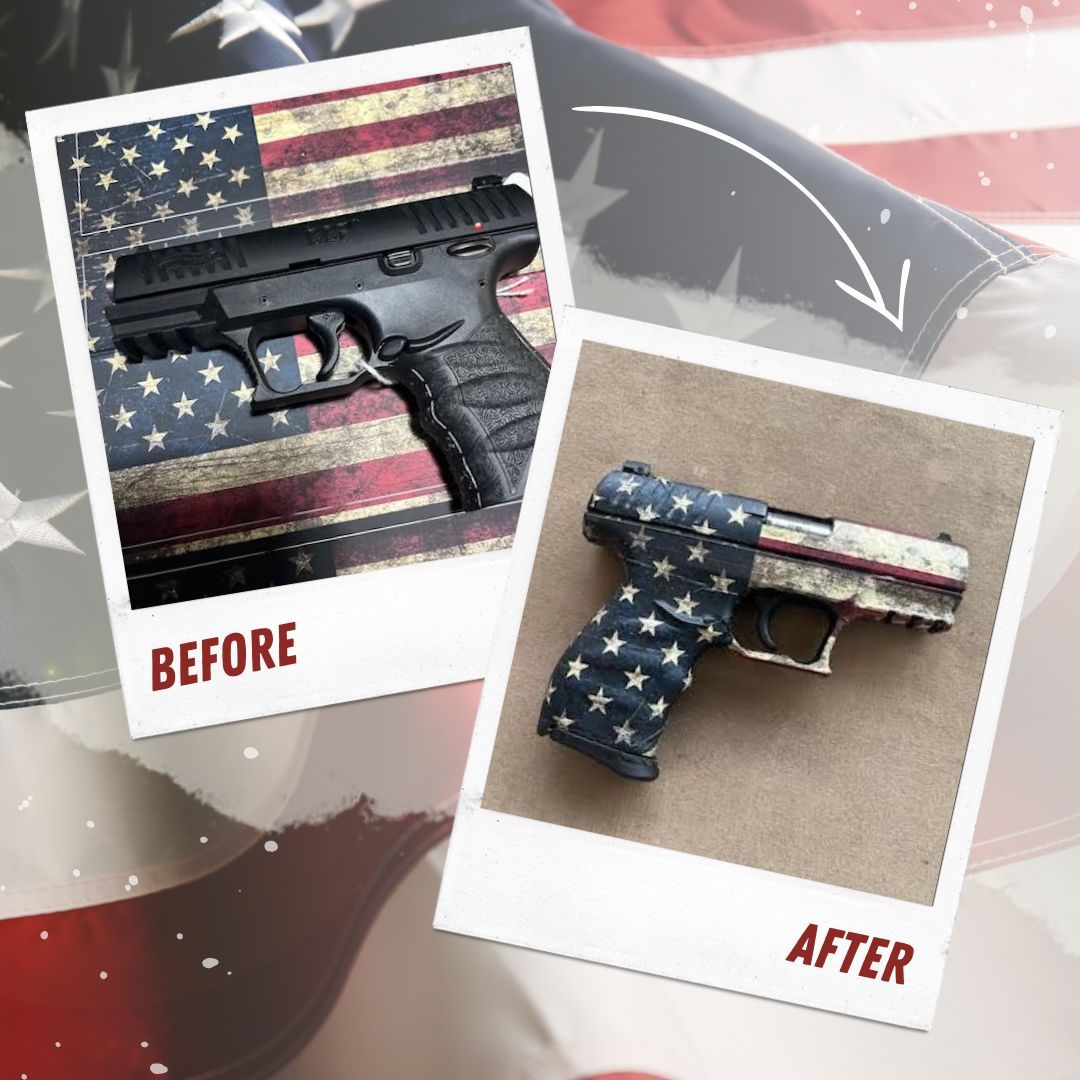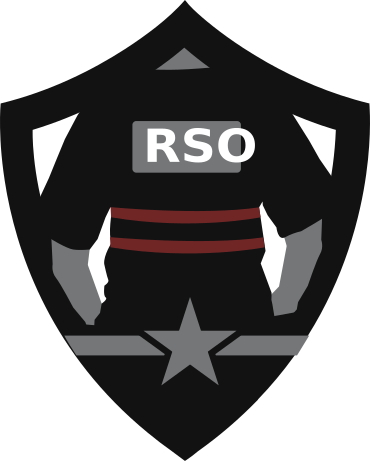Gregory Kielma • January 1, 2024
What To Do When Someone Else Is Shot

Combat Medic: What To Do When Someone Else Is Shot
By
Jon Wayne Taylor
December 29, 2023
Says Gregg Kielma USCCA First Aid Fundamentals Instructor, this is a great article by Jon! The article below is exactly what I teach to first responders in my classes. If you're interested in saving life's, please take a course in First Aid Fundamentals. I offer them once a month or on demand. My courses are outlined in the USCCA training abstract. The course covers two 6-hour days with hands on training. If you're interested give me a call to sign up!
Save a Life start a heart!
Enlighten yourself with Jon's in-depth article.
Being shot and having to treat yourself isn’t ideal. I went over the basics of what to do if you are shot in a previous TTAG post. The nice thing about treating yourself is that you don’t have many options, so you can focus on doing those few things really well. In this post, we’ll go over what to do if someone else is shot. I would recommend reading that first post for some specific treatment methods that we will gloss over here.
First things first…just like when you’ve been shot, if someone else is shot, your first order of business should be ending the threat. If the threat is ongoing, that means returning fire.
As I said the last article, the best medicine on any battlefield is fire superiority. You must limit the opponent’s ability to fire and maneuver. But once that’s done and you and the victim(s) are safe, it’s time to get to work. That’s the time you have more options and you may have a lot more work to do.
Before we get into how to treat a gun shot wound (GSW), we have to get into deciding who gets treated first. Obviously, if there’s only one person shot, get right on that. But what if there is more than one? Whether the attacker intended to shoot one person or not, there are often multiple victims. Getting to the right ones first is a skill set that only experience can really help you master, but there are a few techniques that will help.
The overriding rule of triage: help those that are in need of assistance and have the best chance of survival if you provide that assistance. That sounds simple, but emotionally, mentally, that can lead to some extremely difficult decisions.
If you think getting shot or blown up and driving on with the mission makes you hard, it does, but not compared to the decisions you have to make in triage. Trust me, I’ve done both. You will be able to make those decisions as well, and people will be better off for it when you do.
What kind of decisions? Well, for instance, I have had to step over breathing children and delay their care, knowing it would result in their death in order to work on a conscious adult. I did that more than once because I had a better chance of saving the adult’s life than I did the child’s. Nothing will get to you like dragging a breathing child away to die alone while you work on someone else, but you may have to do that. If you don’t, it’s possible that both the adult and the child will die.
Note that you aren’t trying to help the largest number of people…you are trying to help the people that you can do something about, to save life, limb, and eyesight. I have, in my career, had an event where I had six severe traumatic patients. I knew that if I did everything right — everything just perfectly — five of them would probably die. And they would die because I would have to ignore them to save the one who I thought I could do something about.
Just understand that those decisions will have to be made — very quickly and correctly — or everybody suffers and more will die. The worst possible thing is to wait. Waiting is tantamount to murder.
Also, once the threat is gone, everyone who is wounded is a patient. Everyone. That includes the aggressor. Yup, you have to treat the shooter. This isn’t a philosophical debate. If they’re no longer a threat and they are wounded, they are a patient and you have to treat them to the best of your ability. That means triaging them appropriately, too.
I have treated the enemy before myself. Try and avoid that scenario if possible.
There are many methods to triage, but here is an easy and effective one…once the scene is safe, stand up, use your loud grownup voice, and say “My name is (___). People have been shot and I’m here to help. If you can hear the sound of my voice, get up and come to me.” Give that barely half a minute. The people that can get up and start to make it to you are your second priority.
The next thing you say is, “Okay, if you can hear the sound of my voice, raise your hand and yell, let me know where you are.” Those people are your first priority. Get to them right away. Because if they are conscious but can’t move, they are in bad shape, but not so bad you can’t do something about it.
The people who could not respond to you in any way are your last priority. You treat the responsive but immobile first, then the mobile, then the unresponsive. You are only treating them for life, limb, and eyesight. You treat everyone you have time to treat and none who you don’t.
If you are shot, treat yourself first, then get to work on everyone else. If that’s just one other person, great, but it might not be. Unlike before when it was just you getting shot, if there is anyone else conscious there, have them call 911 immediately, even if that’s the victim.
Getting the GSW victim to call 911 is a very good thing. It keeps them engaged and conscious while freeing you to work. If there’s no one else who is conscious, but you have more than one victim, call 911 now. The same rules for putting the phone on speaker phone mode apply. Never turn it off.
So the scene is safe and you have sorted the victims. Breath deep and smile, the hardest work is done. I mean it. Force yourself to take a deep breath. Force yourself to smile. The most important vital sign in any casualty event is YOUR pulse. So take a breath and get yours down a bit.
If you have help, instruct them to start helping other people, but be willing to call them over if you need them. Until there’s a more competent medical provider there, you are in charge of helping the victims.
The first thing you’re looking for is bleeding. The way we do that is by asking people where they are shot, looking, and performing a rapid blood sweep. There’s no need to take clothes off or expose the wound at this point.
Wipe your hands off, put them on the patient, and then look at your hands again. If there is blood, check that area out and get to work. If there is no blood, move to the next part of the patient, checking your hands each time. It does no good to check the whole patient and then look at your hands. You won’t know where the blood came from.
Just like before, your go-to care for a GSW to an extremity is the tourniquet. If you need to make one, get someone else to hold pressure while you make it and apply it. But get on that fast because it’s relatively easy to remedy and will save a life quickly. By the way, a patient with a GSW to one arm can dial 911 with the other.
Injuries to the torso will require a dressing and pressure. Expose only the wound area you have to, but press down on that injury. Yes, you can stick your fingers inside of them to put pressure on the wound. No, don’t fish around. As in my earlier article, hemostatic agents such as QuickClot Guaze are preferred, but not required. Get that dressing on, pressed as hard as you have to, and tape it all down.
How do we know when the bleeding is controlled and it’s okay to move on to something else? Squeeze, squeeze, squeeze until the red blood stops.
Just like before, a patient with penetrating trauma to the upper torso may have a sucking chest wound. If the patient is conscious, they will tell you that it’s getting harder to breathe. If they are unconscious and unable to tell you that, you will eventually see the uneven rise and fall of their chest.
There are a few good telltale signs, but if you haven’t seen them before you will likely miss them. The general rule for you, if you aren’t medically trained, is to treat any open chest wound as if it were a sucking chest wound. Refer to my previous article for treatment.
Some of you wise guys may be asking about needle-chest-decompression. That’s where you shove a 14g needle into someone’s chest cavity to relieve the pressure. Unless you have been extensively trained with this in a hands-on setting by a qualified medical provider, do not attempt this. The majority of trained first responders get this technique wrong in one way or another and many cause more harm than good.
In the worst case scenarios, I’ve had combat life savers go under a rib instead of over it and cause more bleeding into the thoracic cavity. I’ve also seen patients that received a needle chest decompression that didn’t need one at all and now they need a thoracotomy. That’s not ideal. Skip it unless you really know what you’re doing.
As in my previous post, roll a patient with a thoracic GSW onto the side of the injury and make sure you treat any exit wound. Patients with any facial trauma should be rolled onto their side, or at least have their head turned to the side. Don’t put a pillow under a GSW patient’s head unless there’s an injury to the spine and you need to keep it from moving. I have seen a patient killed from a good Samaritan putting a makeshift pillow under her head, cutting off the flow of air down her windpipe and choking her to death. Don’t do that.
Now we can move to the patient’s airway. For the vast majority of GSW patients, simple positioning will protect their airway. That is, unless they are shot in the face and have teeth and blood loose in their mouth, just sitting them upright or laying them on their side will be good enough.
If they are shot in the face, you may have to perform a simple finger sweep of their mouth to get bone or teeth clear of their windpipe so that they can breathe well. Don’t just fish around. Look in first and see what’s wrong, then you can sweep a finger through their mouth to take out any obstructions you see. Positioning on their side is good for now if they’re not fully conscious. Be aware, you will likely have to do this more than once.
As in the earlier article, we aren’t going to worry about putting in an IV. Even in most combat situations, we don’t do that anymore unless we know that it’s going to be hours before they receive comprehensive medical treatment. For most people, training time spent learning to give an IV is far better spent learning to stop bleeding in the first place.
If you only have one other patient and they don’t have a pulse, control any bleeding and then move to CPR. There’s no need to perform CPR if you cannot control bleeding, or if there is another patient you can help. You will perform CPR unless and until help arrives. If you do it right, you will be exhausted in a matter of minutes.
Treat all of the life-threatening injuries on one patient before moving to another.
Now it’s time to splint up injuries, bandage eyes, get patients out of the cold or extreme heat, and get them ready for the ambulance or other transportation. Unless you are way out in the woods, there’s no need for you to carry a patient. If the scene is safe and you find yourself picking someone up, you are doing it wrong.
If you must move them for the sake of safety or to get them out of extremes, drag them there. I don’t care if they only weigh 50 lbs. and you are a big strapping man. Unless they are an infant, drag them there. Don’t carry them.
Now is the time to start reassessing your patient(s). Your biggest concern is still the bleeding, doing another complete blood sweep and making sure nothing has come loose and is bleeding again. Check and see if it’s time to relieve pressure on that chest seal. Talk to your patients constantly, and keep them involved in their own care. This reassessment, treatment, and assurance will continue until more help arrives.
Good medical gear really helps, but most kits have more things than you will need or know how to use. If you’re on the range with other people or you can throw a bag in your home or vehicle, I would recommend at least the following to treat others:
At least 4 tourniquets
At least 4 sets of Quick Clot Gauze, and at least 6 rolls of Kerlix.
At least 4 chest seals.
At least 3 Sam Splints
And buy more medical tape than you ever thought you’d need and a flashlight that you don’t have to hold down a button to keep on. That’s the minimum. Put it in any easy-to-get to bag. I prefer everything in clear Ziplock bags and put it all in one big compartment.
As I wrote before, for those of you who want to get into more medical training and would like a good guidebook, the Ranger Medic Handbook is the best single guide I’ve ever seen.
For more in-depth reading, I would recommend the US Army’s Emergency War Surgery, now published completely online as well as my constant field companion, Tintinalli’s Emergency Medicine Manual.

More Mixed Signals From The U.S. Justice Department On Second Amendment Support We’ve reported lately how the U.S. Department of Justice (DOJ) seems to have a somewhat schizophrenic attitude when it comes to supporting the Second Amendment. On one hand, the DOJ claims to be doing everything it can to restore Americans’ 2A rights. On the other hand, DOJ attorneys will defiantly argue in support of an obviously unconstitutional infringement. In late November, the Firearms Policy Coalition (FPC) and Second Amendment Foundation (SAF) lambasted the DOJ for trying to limit a critical Second Amendment court ruling. After a court ruled that the nationwide ban on concealed carry in post offices is unconstitutional, the DOJ filed a motion to limit the scope of the injunction to only the named individual plaintiffs and to members of SAF and its partner organizations, but only to those who were members when the complaint was originally filed and who have been identified and verified. In other words, the government wants to keep the ban intact for the rest of America’s lawful gun owners. “The critical thing to remember here is that the government is fighting tooth and nail to continue enforcing an unconstitutional law against as many people as possible,” SAF Executive Director Adam Kraut said. “The DOJ’s position that it would be ‘impossible’ for it to know who was protected by the injunction without a membership list is just plain silly. If officials want to know if someone found to be carrying at a post office is a SAF member, they can simply ask.” Less than a week later, Reuters published information about a leaked DOJ plan to expand gun-rights protections with a new office in its civil rights division dedicated to enforcing the U.S. constitutional right to bear arms. The office, called the Second Amendment Rights Section, is expected to open on December 4 and will be dedicated to investigating local laws or policies that limit gun rights, something the Trump Administration has promised since its first week in office.

Michigan Governor Whitmer Surprise: Whitmer’s Anti-Gun Task Force Says Stricter Gun Laws Are The Answer To Violence Mark Chesnut “Garbage in, garbage out” is an old computer science axiom that describes how flawed, biased or poor-quality input will produce equally flawed, biased or poor-quality output. Of course, the principle doesn’t only apply to computer science. The entire gun control world often operates on this same premise. So, consider how unsurprising it truly is that a task force that Democrat Michigan Gov. Gretchen Whitmer created to make policy recommendations to curb violence is urging state lawmakers to ban the possession of so-called “assault weapons” and “large-capacity” magazines. According to a report at michiganadvance.com, Dr. Natasha Bagdasarian, the state’s chief medical executive and the task force’s chair, said the group used a “public health” approach to addressing “gun violence” in the state. “There are a lot of issues here that have not historically been thought of as public health issues, and only when we’ve taken this really comprehensive public health approach have we been able to implement real change,” Bagdasarian told the newspaper. “Gun violence is one of those issues.” It’s easy to immediately see how much garbage went into this project, resulting in the garbage that came out. First, Whitmer tasked the group with finding an answer to the “gun violence” problem. That is, indeed, garbage.

Florida: Pro-Gun Bill Repealing Adult Age Discrimination Advances to House Vote Yesterday, the House Judiciary Committee voted 13-7 to favorably report pro-gun House Bill 133, which restores the ability for young adults to lawfully purchase firearms. The bill now heads to the full House, where it is eligible for a vote when the 2026 regular session begins in January. House Bill 133, sponsored by Rep. Tyler Sirois, restores the ability for young adults to acquire firearms by lowering the minimum age requirement to purchase from 21 to 18. Since 2018, Florida has completely banned 18-to-20-year-olds from purchasing a firearm of any kind, for any purpose. A young adult in violation faces stiff penalties, including up to five years of imprisonment, a fine of up to $5,000, or both. On May 16th, the NRA filed a petition for a writ of certiorari in NRA v. Glass, requesting that the U.S. Supreme Court hear its challenge to Florida’s law prohibiting adults under 21 from purchasing firearms.

Brady X Poster Gets Undies In A Bundle Over ‘Less-Than-Lethal’ Weapons Proposal Mark Chesnut When an organization goes somewhat berserk on social media, passionately stringing post after post together ostensibly to make some kind of point, you’d normally figure that topic is probably a top priority of that group. That’s why gun-ban group Brady’s recent freak out over less-than-lethal weapons is somewhat bewildering. Brady: NONSENSE Brady, formerly called Handgun Control Inc. before leaders learned that most Americans were against “controlling” handguns, has never seen a gun control scheme that it didn’t embrace. But until the recent flurry of social media activity, so-called less-than-lethal weapons didn’t seem to be on the group’s radar much. That changed big time on November 19, when whoever was handling the organization’s X (formerly Twitter) account. “While the world focused on the Epstein files, Congress took up a dangerous bill that sponsors say is to help law enforcement get greater access to ‘less-than-lethal’ weapons,” Brady posted in a typical manner critical of anything seemingly in the pro-self-defense category. “In reality, it deregulates dangerous weapons to help a billion-dollar weapons industry make more money.” That’s all well and good, but the author seemed not to be able to let the matter go, soon posting more on the topic just a few minutes later. “This bill isn’t from a well-intentioned lawmaker or a group working to prevent deadly police violence,” Brady posted. “It’s backed by the manufacturers of so-called ‘less-than-lethal’ weapons, like tasers, who have started making products that are appropriately classified as guns under the law.” Still apparently not having said enough, the Brady writer entered rant mode with yet a third post a short time later. “In their effort to skirt the regulation of their products, this bill would narrow the definition of firearm and open a new market for untraceable ghost guns, which have already led to thousands of deaths in the last decade,” Brady posted.
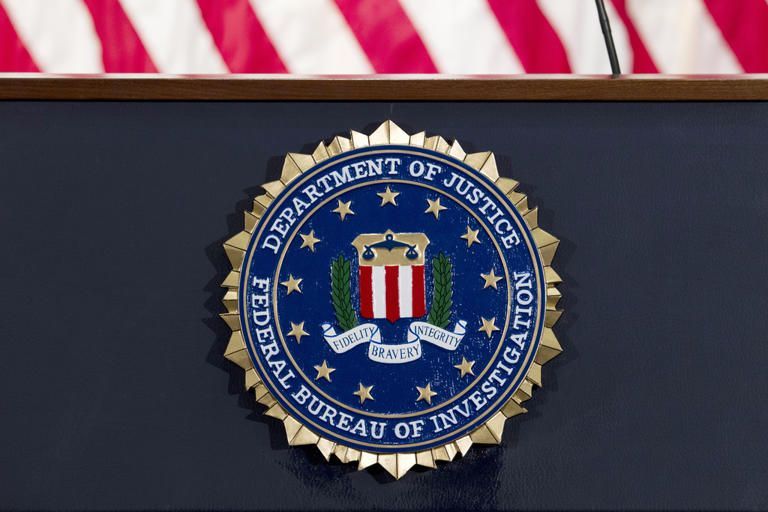
Extremely Troublesome Department Of Justice Brief Draws Stark Warning From GOA Mark Chesnut A bold brief, recently filed by the U.S. Department of Justice (DOJ) in a case challenging the National Firearms Act (NFA), has one gun-rights organization sounding an alarm. According to Gun Owners of America (GOA), on November 20, the DOJ, in the case Silencer Shop Foundation v. ATF, filed an “outrageous brief that embraces an alarmingly expansive theory of federal authority.” That assertion runs directly afoul of President Donald Trump’s promise to protect the Second Amendment for all Americans. In responding to GOA and GOF’s “One Big Beautiful Lawsuit,” the DOJ treats Congress’ removal of the historic $200 tax as a pretext to rewrite the limits of congressional power, advancing an argument that would open the door to federal regulation far beyond anything the Framers intended. “GOA and GOF condemn Attorney General Pam Bondi and President Trump’s Department of Justice (DOJ) for doubling down on enforcement of an archaic and unconstitutional law while simultaneously offering legal theories that would expand federal power to historic levels,” GOA said in a news release revealing the DOJ’s actions. “This is especially striking from an administration that had promised to respect the Second Amendment and review burdensome agency rules.” As GOA further explained, the implications of the DOJ’s stance are immediate and ominous.

If you have a concealed carry permit and you have a gun with you, and you walk into or need to go into a store that doesn’t allow guns, what do you do? Says Kielma, this is an easy one for me. I do not and never will enter a place that has ca no "firearms allowed" , ever. I’ll spend my hard-earned CASH SOMEPLACE ELSE. If I miss the sign by accident and enter then, I’ll suffer the consequences. NOTE: Please check for signs on doors. Keep your firearm concealed and no one should bother you if you miss the door sign. Let’s take a look at BOB an avid reader of my website would do: I have a concealed carry permit, and I carry concealed all the time. Concealed means unseen. Unless they have metal, detectors and security guards wandering, I simply ignore the signs. The difference would be places whereby actual law, you cannot be armed on the premises. Federal and government buildings for instance. True story. We went to see a show. We had to park some distance away and when we got to the place to present our tickets… you guessed it, they were wanding everybody. My wife says to me, “well, you've got your ticket and seat assignment, hurry back.” I just nodded and stayed in line. When she got up there, they wanded her and glanced in her purse. I was next. I told the female doing the wanding that I was going to set things off because I had a lot of metal on me. I then pulled a suspender strap from under my coat and showed her the metal concho on it. She told me OKAY, swiped the wand down my front and back - it went off - and she waved me through. When we took our seats my wife side mouths to me, “one day you're going to have to tell me how you did that.” “Old Jedi mind trick I replied, these are not the droids you're looking for.” What was I carrying? Full size main firearm with two backup magazines, backup firearm with two speed strips, Leatherman Wave, Swiss Champ, Thru Nite flashlight, neck knife and a couple other pocketknives and a smartphone. Several points: No place on the tickets did it say no firearms or pocketknives. Matter of fact there was no mention of security. This was a public venue. I had already paid to be there. My permit was valid in the State I was in. Concealed means just that. My 4th Amendment rights didn't evaporate with my purchase of a ticket. The fact I got through security meant others may have too. Was this event taking legal responsibility for my security and that of my family? Of course not. As we were leaving my son said, “so much for their security.” He was right. Security unless you have the Secret Service providing it is pretty much an illusion/delusion.
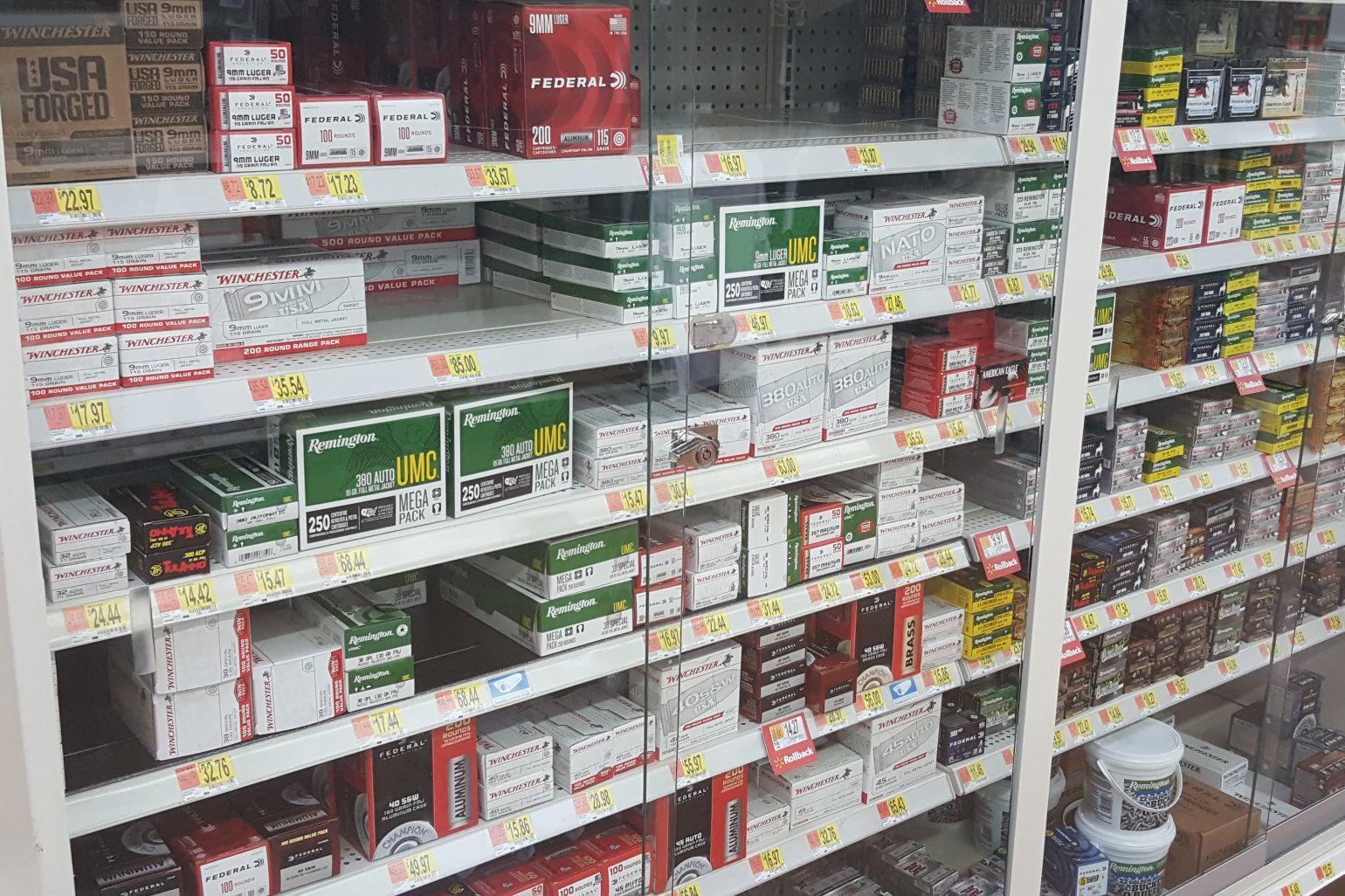
What's more powerful than the .308 and .30-06 for certain types of hunting? How does it compare? What do you think? .45 70? Gregg Kielma .45-70 ? As a straight-walled cartridge, it and similar types of ammunition are favored for deer in states were bottlenecked cartridges, such as 30–06, cannot be legally used. In its original loading, it delivers 2,221 joules of energy but has been loaded much hotter to the point that 3800–4600 joules are possible. A standard .308 load delivers around 3600 joules and 30–06 around 3800. It is a good example of “knockdown power" type of ammunition in that a large chunk of lead, traditionally not moving as fast, hits hard because of its mass. More modern cartridges made use of smaller bullets and smokeless powder to create ammunition that hits hard with a moderate projectile and much higher velocity. The tradeoff is that .308 and .30–06 have far less muzzle drop at long ranges. Off the top of my head, the projectile drops something like 4′ at 400 yards, but it has been a while since I looked that up. .308 is much flatter shooting. Just my opinion. What do you think?

Is it safe to unload a handgun every time we get home? Gregg Kielma This depends on several different situations. You must find what works better for you, and your family. They did that for years in the military. They would safe and clear everyone’s weapons before they went into the mess halls. They would take a pistol out of a perfectly solid holster that could be dropped out of an aircraft and not go off and proceed to pull the slide and the trigger into a clearing barrel to make sure it was empty. Occasionally it wasn’t. It was a bad idea. So eventually they stopped having people do it and do you know what!? No one was shooting guns in the mess hall. Every time you handle or have people handle guns they can go off. Especially WHEN PART OF THE PROCEDURE IS PULLING THE TRIGGER. A better procedure is NOT TO PULL THE TRIGGER. Again, if your weapon is loaded, the firearm you carry should be. You shouldn’t unload it unless you are cleaning it or are going to swap it out with another carry weapon in the gun safe. It is said that you do need to release spring tension on magazines, it is said by all the old guys, but that is every few years and you should be cleaning any gun more often than that. Loading and unloading your weapon every single day is something I suppose you could do. I wouldn’t if I wasn’t being paid to do so. My EDC stays loaded for a few months at a time. Then I cleaned it and get it ready for another 3-month tour. Every time you mess with a gun you have the chance of an accidental discharge. It is designed to sling supersonic metal out the front of it. Accidents happen every single day and the way to increase the number of accidents is unnecessary gun handling. Do not push yourself past competence and into complacency. Let’s Take a LOOK: • You do something a hundred times, and you get good at it. • A thousand times and you get great at it. • You do it 6,000 times and you get complacent because you have done it TOO much and that is when you get bit. That is why you can’t do the same job for decades and maintain the same exact level of proficiency. Chances are you may or will get careless.
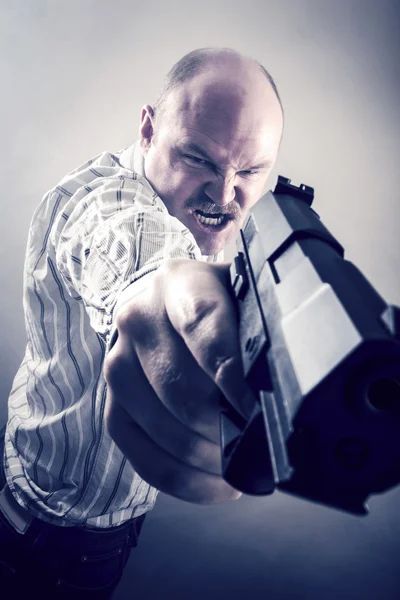
I have a concealed permit to carry and if I find myself in a threatening situation, can I show it to defuse the threat without it being seen as brandishing even though it resolved peacefully? Gregg Kielma Gregg Kielma gets asked this question a lot. Says Kielma, “I get asked this a lot and can give you what I’d do if I was in a bad situation I didn’t start nor could not avoid or escaped from. Let’s take a look”. Never pull a weapon to threaten and never fire a warning shot in life-threatening situations. If you reveal a weapon, someone might rush you, disarm you, and use it against you. If you are in a life-threatening situation, stay calm and use verbal de-escalation without making threats. If that fails and you're confronted by a violent person, do not let them get close—keep moving back and maintain at least 25 feet of distance. If they get any closer or fail to comply with your instructions, in a loud voice shout, drop your weapon, drop your weapon. As a last resort and only as a last resort, draw your weapon and fire shots at center mass. Continue firing until there is no longer a threat. When you shout "drop your weapon" it lets others know you felt threatened. If a shooting occurs, you will be arrested—do not speak to police without an attorney present. Invoke your 4th and 5th amendment rights. Tell them you'll provide a full statement once you have legal counsel; you only get one opportunity to do so properly. You cannot hesitate in a life-or-death situation. If you do, you will be among the dead. Kielma’s final thought, says Gregg, “please take my training CCW course. I provide a lot of information in the class that is easy to understand and may keep you out of jail and alive.
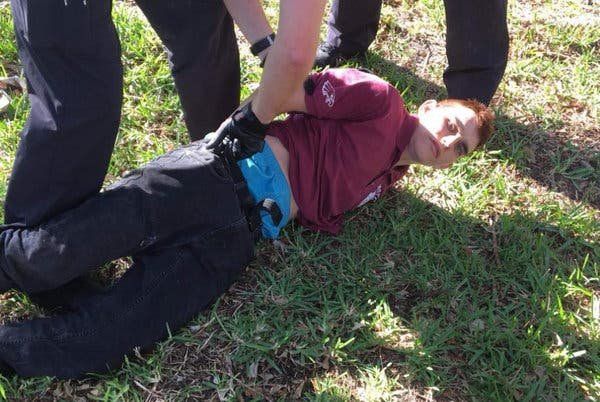
Indianapolis Pimp Given Three Life Sentences in Federal Prison for Running Sex Trafficking Enterprise and Committing Murder Tuesday, November 25, 2025 U.S. Attorney's Office, Southern District of Indiana Editor's Note: This sentencing occurred on September 25, 2025, but was not published at that time due to government shutdown. Press release posted and made available following the return to normal operations. INDIANAPOLIS- Kristopher McDonald, 37, of Indianapolis, has been sentenced to three life sentences in federal prison. In May of 2025, a federal jury found McDonald guilty of the following eight counts related to his operation of a violent human trafficking enterprise: Count 1: Murder in aid of racketeering activity. Count 2: Brandishing and discharging a firearm during a crime of violence. Count 3: Possession of a firearm by a convicted felon. Counts 4 & 5: Sex trafficking by force, fraud or coercion. Count 6: Enticing an individual to travel in interstate commerce to engage in prostitution. Counts 7 & 8: Travel act; a federal crime to engage in interstate or international travel, for the purpose of furthering certain "unlawful activities.” According to trial testimony, from June 2023 through April 2024, Kristopher McDonald orchestrated and led a human trafficking operation in Indianapolis and other states. During this time, he recruited and exploited women, some from out of state, for commercial sex, maintaining strict control over the operation. McDonald managed all aspects of the criminal enterprise, using force, fraud, and coercion to control the activities of the women. McDonald recruited the women over the internet, making false promises to them to lure them into his enterprise. He then used several means to manipulate and control the women to engage in commercial sexual activity. McDonald limited the victims’ access to the outside world by taking control of their personal identification, cash cards, and cellphones. McDonald threatened the women with physical violence and directly employed violence, including pistol whipping, to compel them to engage in commercial sex. McDonald also caused the women to become addicted to crack cocaine by rewarding them with the drug when they followed his orders and withholding it when they did not make enough money on a given day. McDonald also threatened to kill the victims and their families if they contacted the police. McDonald often compelled the victims to engage in commercial sexual intercourse on nine or ten occasions per day. The trial testimony also established that on October 11, 2023, McDonald murdered another man in furtherance of his human trafficking organization. After the man engaged in commercial sex with one of the victims, McDonald emerged from an adjacent room and demanded an additional $200 from the man at gunpoint. The male victim drew his own firearm in self-defense and shot McDonald . McDonald ran back into the adjacent room, loaded his firearm with a magazine, and shot the male victim eleven times in the back as he attempted to flee the hotel room. McDonald , a previously convicted felon, was not permitted by law to possess the firearm that he used to murder the male victim. “Kristopher McDonald’s reign of terror is over, and our community is safer because of it. This sentence sends a clear message that those who exploit vulnerable individuals through violence, addiction, and fear will face the full force of federal justice,” said Tom Wheeler, United States Attorney for the Southern District of Indiana. “I am grateful for the outstanding work of our law enforcement partners, whose collaboration and dedication made this prosecution possible, and to the survivors, whose strength and courage in coming forward were instrumental to securing justice.” “There is no place in our society for criminals like Kristopher McDonald . The crimes he committed were despicable, outrageous, and cut to the very core of our moral fabric. Life in prison is exactly what he deserves — and ATF could not be prouder of the agents whose relentless work made this outcome possible,” said ATF Columbus Field Division Special Agent in Charge Jorge Rosendo. “Kristopher McDonald wielded violence as a weapon to coerce victims, expand his sex-trafficking operation, and maintain power through fear,” said Adam Jobes, Special Agent in Charge, IRS Criminal Investigation, Chicago Field Office. “His life sentence removes a ruthless predator whose presence threatened the very fabric of our communities—and the importance of that removal cannot be overstated. IRS Criminal Investigation will continue leveraging its forensic accounting expertise to follow the money, dismantle criminal enterprises, and bring violent offenders like McDonald to justice.” The Bureau of Alcohol, Tobacco, Firearms, and Explosives, Internal Revenue Service Criminal Investigation, and IMPD investigated this case. The sentence was imposed by U.S. District Judge Tanya Walton Pratt. U.S. Attorney Wheeler thanked Assistant U.S. Attorneys Bradley Blackington and Michelle P. Brady, who prosecuted this case.



